VARIOUS
ANCIENT BEADS
This page showcases
a diverse range of ancient beads, each with its unique
allure and history.
As illustrated in the chapter titled "Ancient Bead
Production," a variety of methods, notably heat
treatment, were employed to change the color or deepen
the hue of the stone. Such treatments often heightened
the prominence of crystalline layers or bands because
the sugar or honey utilized in the process couldn't
penetrate these layers. This often amplified the
visibility of naturally occurring eyes and stripes,
enriching the visual appeal of the beads. The selection
of beads displayed below exemplifies this striking
effect.
|
The beads in
my collection
are now for sale
Inquire
through bead ID
for price |
|
|
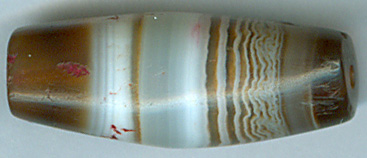 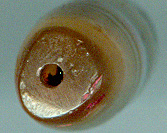
VAB 1 -
30 * 11 mm
|
A rare ancient banded agate bead from the
Himalayas - the play of colors in these
beads is unique! Unfortunately my scanner is not able to display the full translucent shine in this bead.
Himmachal Pradesh - Ram Shehar near Nalagarh - India
|
|
|
|
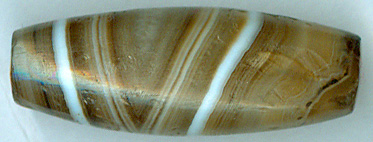 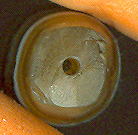
VAB 2 - 30 * 10 mm
|
|
|
|
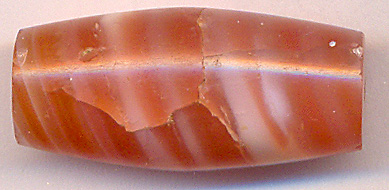 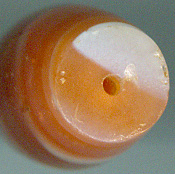
VAB 4 - 30 * 13 mm
|
|
|
|
|
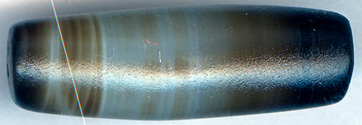
VAB 5 -
29
* 9,5 mm
|
|
|
|
|
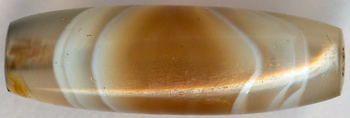
28
* 9 mm
VAB 6 - SANAT
|
|
|
|
|
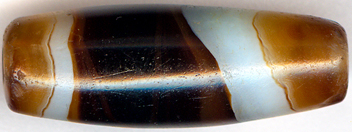
30
* 10 mm
VAB 7 -
SANAT
|
|
|
|
|
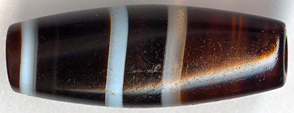
28
* 8,5 mm
VAB 8 -
SANAT
|
|
|
|
|
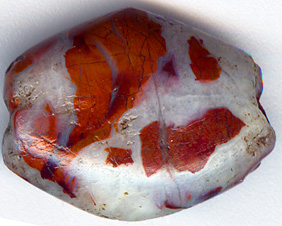
VAB 10 - IND-CL 2 -
23
* 18 * 9 mm
|
|
|
|
|
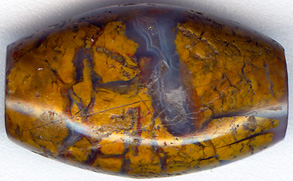
VAB 11 - IND-CL 3 -
24
* 14,5 * 8 mm
|
|
|
|
|
|
|
|
|
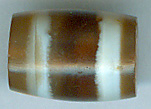 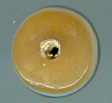
VAB 13 - 11 * 7 mm
|
|
|
|



VAB
15 - a: 16,5 * 6,5
b: 14 * 6
c: 15 * 6
I
love these small multicolored ancient agate beads! I have named
them The Trinity of
Triratna.
|
|
|
|
|
Lapis Lazuli seal beads from Nepal
Displayed below are
some incredibly unique seal beads made of high-quality
lapis lazuli. The bead to the left features a typical
motif from the
ancient city of Patan,
the Buddhist Wind Horse. As Wikipedia explains, the Wind
Horse has been used as a symbol for the human soul in
the shamanistic traditions of East Asia and Central
Asia. The bead to the right portrays a King conducting a
religious sacrificial ritual.
|
|
|
|
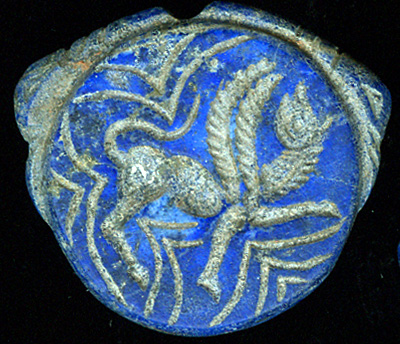
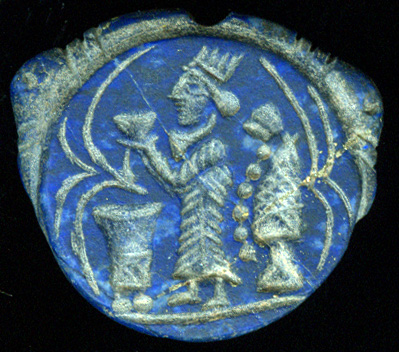
VAB 17 A -
32 * 28 * 5 mm - 17 B
(17A is SOLD)
|
On the reverse side of these remarkable lapis lazuli
seal beads from Patan, you can see a Buddhist lotus
motif which dates back to the reign of the Malla Kings
(pre-1768). I speculate that this motif is typical of
the Sakya Newar Buddhist clan from Patan. The Wind Horse
motif also points towards the Newar Buddhist culture of
Patan, as the Wind Horse statues found in Patan also
feature wings, much like the depiction on the bead.
|
|
|
|
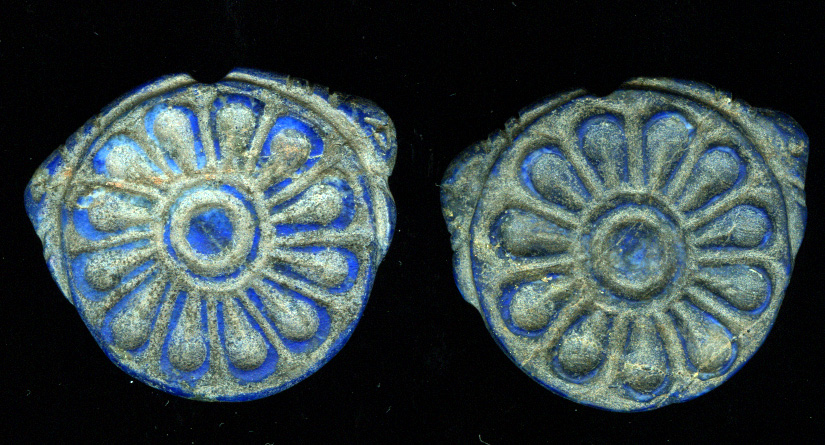
Backside
of the beads
Click on pictures for larger image
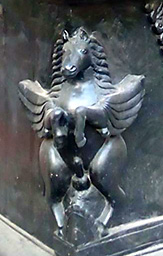
Windhorse from Patan
|
|
|
|
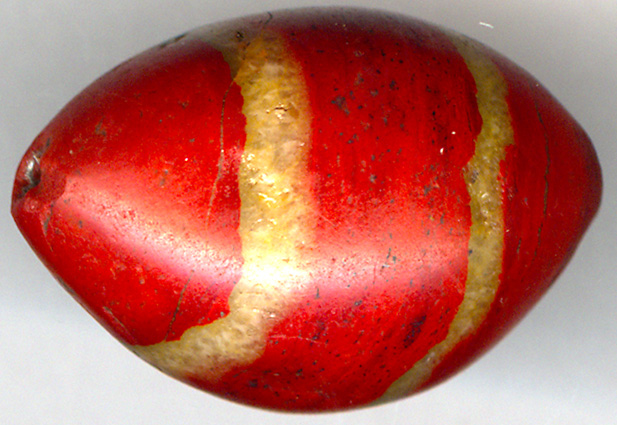
VAB 18
-
26 * 17 mm
Click on picture for larger image
|
Ancient red jasper bead with crystal banding
Displayed above you can enjoy the color play in a wonderful deep red ancient
jasper bead with two crystalline
bands.
|
|
|
Ancient Jasper disk beads
|
|
|
|
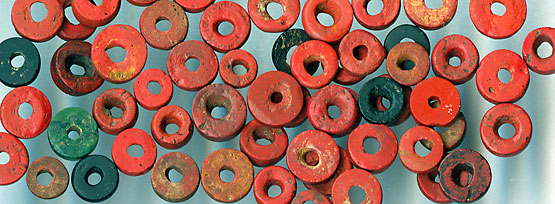

VABJ
19
- average size 7* 2 mm
|
|
|
|
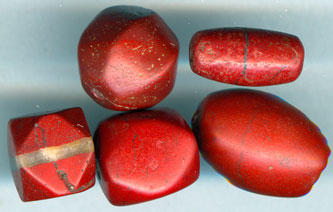
VABJ
20
- left : cornerless cube 10,5 *
10,5 mm
|
|
|
|
Ancient Green Jasper Beads
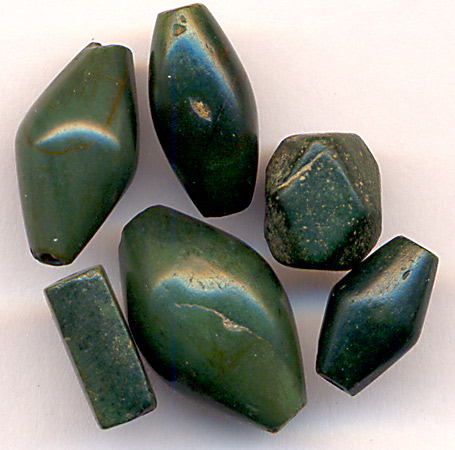
VABJ
21 -
Largest piece: 16 * 10mm - Smallest piece:
10 * 5
mm
Period: From Indus Valley Culture 3000-1500 BC to 1000 AD
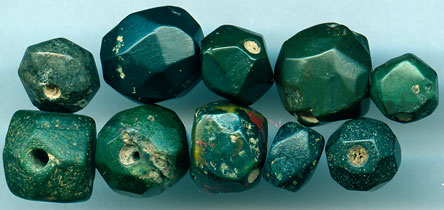
VABJ
22
-
Click on picture for larger image
In this little collection of polygonal green jasper beads we find
quadrilateral, pentagon,
hexagon and corner less cube forms.
|
The ancient tabular agate beads displayed below are from
Haryana, India.
|
|
|
|
Large round tabular beads
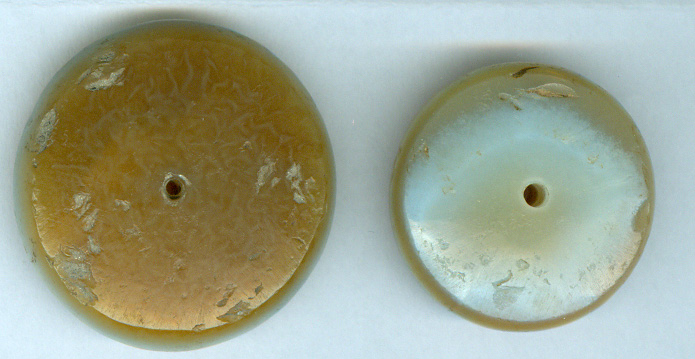
VAB 23 -
28 * 6 mm 23 * 5 mm
|
|
|
|
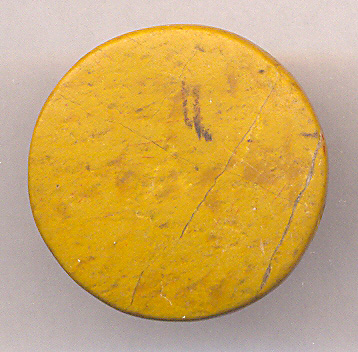
VAB 24
-
25 * 6 mm
Caramel jasper Bead
|
|
|
|
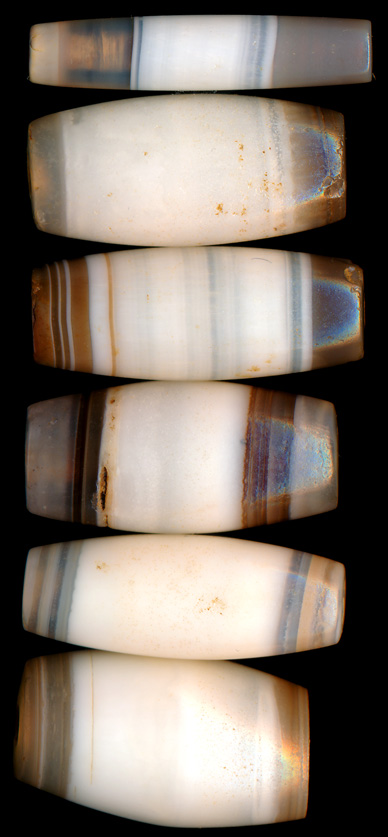
VABBELLY 1 - Bead in the
button: 19
* 11 mm
|
These
white belly beads are from the late Indus period.
FRACTAL BEADS |
|
|
|
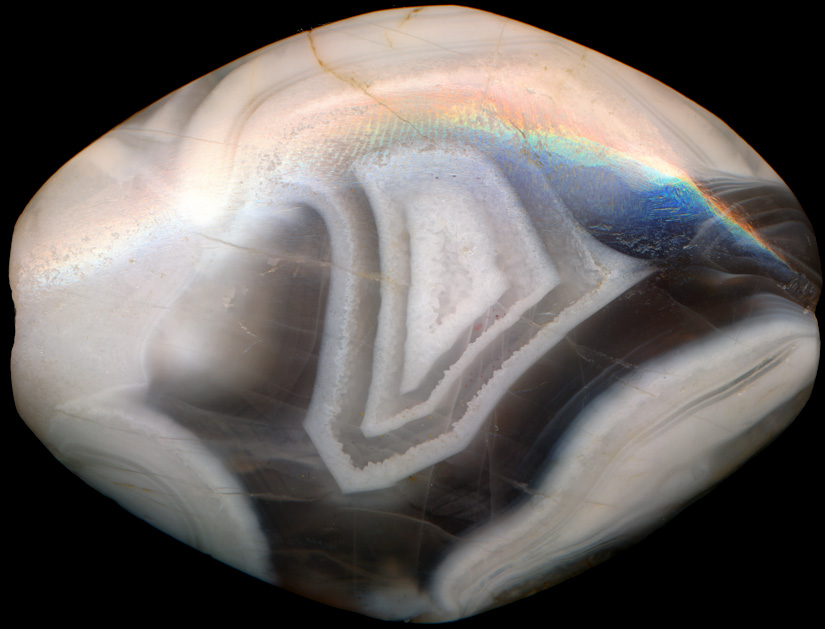
|
FRB 1 - 53 * 39,5 * 12 mm - I call this bead
Africa
The patterns in the above and below bead are
fractal. The same is true for landscapes and continents. With a
little imagination I can see
Africa or South America in the central motif in both beads. In the left eye
formation I see a person with crossed legs in Meditation. My
conclusion on a meta level: I am a fractal. It takes a fractal
to know one.
|
|
|
|
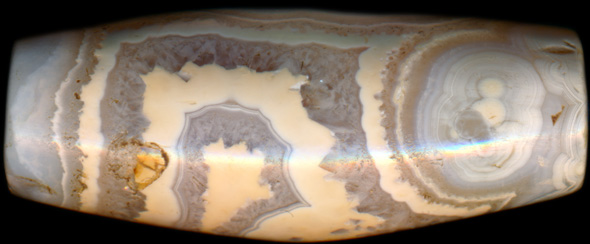
|
FRB 2 - 38 * 15 mm -
I call this bead
The Fractality of Me
AN ANCIENT ENGRAVED MESSAGE |
|
|
|
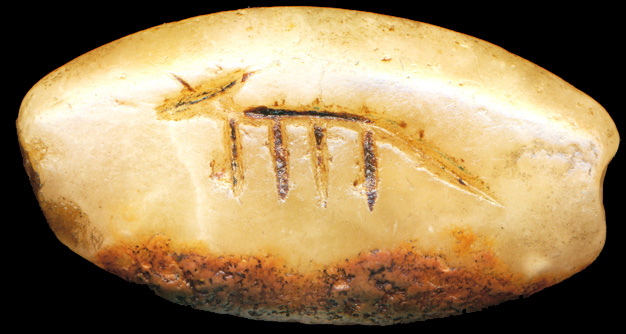
|
VAB-ENGR - 39 * 20 * 9 mm
- I call this bead The
Cheetah
I have chosen to display the above bead because
there is an animal engraved in the bead. This is very very rare.
I have only seen one other Indus bead with an engrave. It
displays a bull motif and belongs to Mr. Tira in Bangkok. You
can see it here:
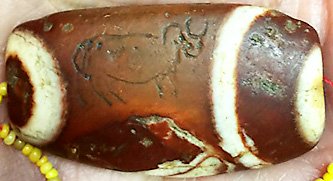
The animal shown on RB 8 cannot
be identified with certainty. However due to its long tail it
resembles a predator, in which case it most probably would be be a cheetah.

Terra cotta - Quetta, Pakistan
The cheetah can as the only member of
the family
of the big cats, be tamed. Note the rope around
the neck of the cheetah. The Indus people used
domesticated cheetahs for the purpose of hunting.
|
|
|
|
|
|
Ancient Jet Stone Beads
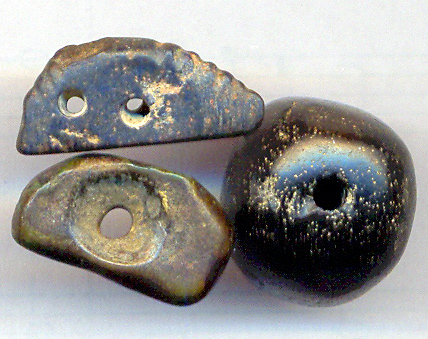
VAB
25
- 26 *
16 mm (big piece)
Jet Stone
Beads
Period: Indus Culture 3000 - 1500 BC
Origin: Afghanistan
|
|
|
|
Ancient Torquoise Beads
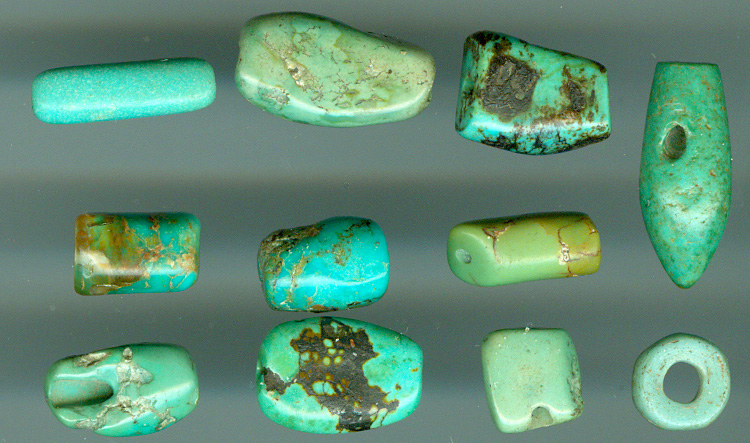
VAB 26 - Top left: 19 * 8 mm
Click on picture for larger image
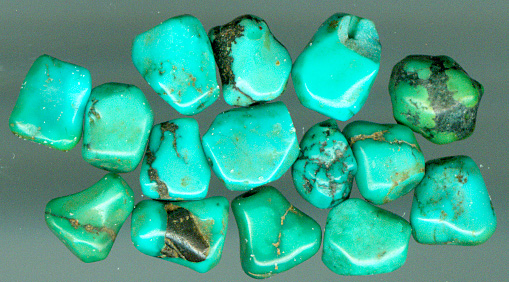
7 * 6 mm
- SOLD
|
|
|
|
Old Turquoise Beads
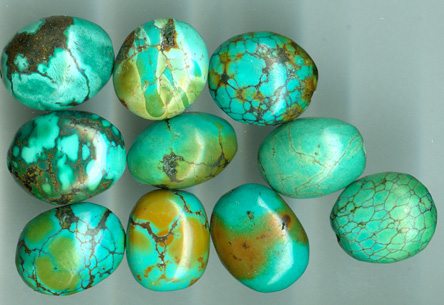
VAB 27 -
19 * 16 * 12 mm
Old but not
ancient Turquoise beads from Morocco
Click on picture for larger image
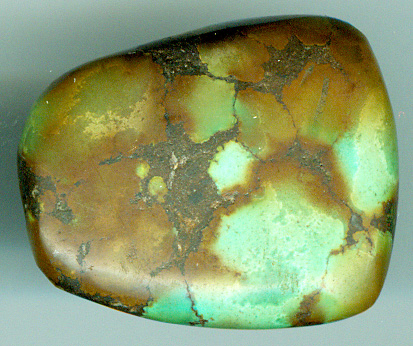
VAB 28 - 33 * 26 * 8 mm
Very old turquoise from Nepal
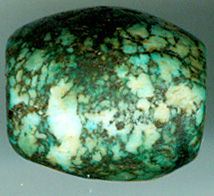
VAB 29
-
17 * 14 mm
Unknown origin
|
The striking lapis lazuli pendant
bead showcased below is not ancient in the strictest
sense, but carries a significant historical lineage,
dating back approximately 3-400 years. The pendant is
shaped in a style made famous during the 16th century by
the legendary Mughal Emperor Akbar, who issued coins in
this distinctive form.
Over the years, this unique shape has become synonymous
with Akbar's prestigious rule, embodying the majesty and
grandeur of his reign. Emperor Akbar, along with the
Buddhist King Ashoka, is considered one of the greatest
monarchs in the annals of Indian history.
This lapis lazuli pendant, despite its relative youth
compared to other ancient beads, is a testament to the
rich cultural and historical legacy of India. Crafted
from the vivid blue mineral, lapis lazuli, a stone long
revered for its intense color and associated with
royalty and wisdom, the bead serves as a beautiful
homage to the epoch of Emperor Akbar, capturing a slice
of the Mughal era's aesthetic charm.
|
|
|
|
The Akbar bead
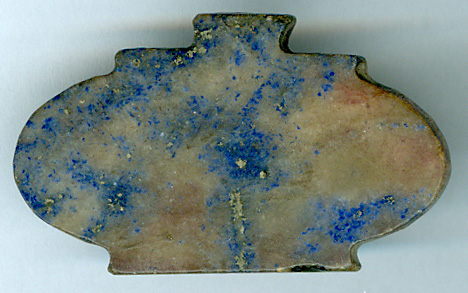
VABT
30 - 37 * 27 * 3 mm
|
|
|
|
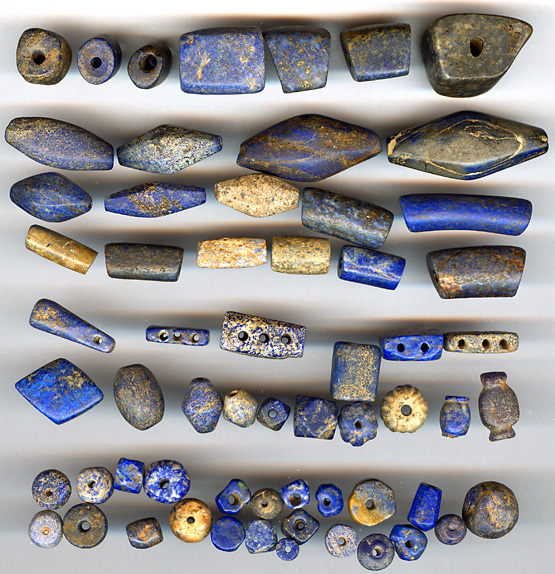
VABT 31
Click on picture for larger image
|
|
|
|
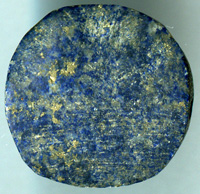 
VABT 32
-
20 * 6 mm (Afg 46)
A rare double ax bead in lapis lazuli
|
|
|
|
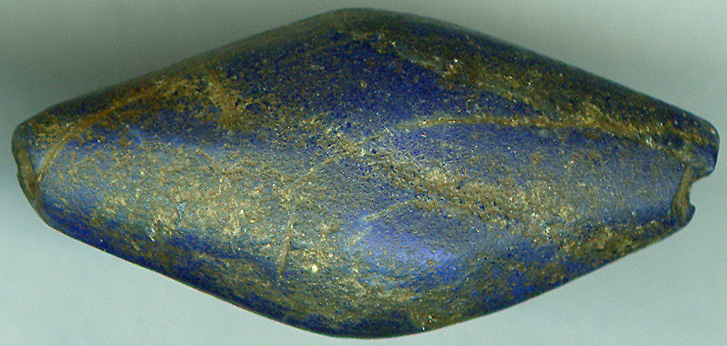
VABT 33
- 30 * 14 * 10 mm
Convex Bicone shaped bead
|
Eastern Asian Beads
The fascinating
long, slender beads showcased below captivate the viewer
with their unique form and striking material. Crafted
from vibrant agate, these beads hail from the regions of
Eastern Asia, hinting at a rich cultural heritage woven
into their sleek contours.
While their elongated form bears a resemblance to the
long carnelian beads from the Indus Valley Civilization,
it's likely that these particular beads don't share the
same antiquity. They present a distinct shape,
differentiating them from their Indus Valley
counterparts and hinting at an independent tradition of
bead-making.
Often attributed to the
Dong Son culture of Vietnam, it is important to note
that their origins might span a larger geographic
expanse. Considering the vast intercultural exchanges
along ancient trade routes, it's plausible that these
beads could have been crafted in regions beyond Vietnam,
possibly even in India, intended for export.
|
|
|
|

VAB -DS 1 - 83 * 12 * 8 mm
Click on pictures for larger images
Not for sale
|
This striking 82 mm long bead possesses an enchanting
translucency that captivates the viewer. The bead
glistens with an ethereal glow, adding an aura of awe to
its presence. Further enhancing its charm is the
enchanting patina gained from its excavation,
bearing witness to its ancient past and journeys through
time.
Interestingly, this bead was possibly not intended for
everyday use. Rather, it could have been reserved for
special religious ceremonies, with a funeral serving as
the pinnacle event. One could speculate that a bead of
such exquisite beauty was designed to make an impression
on the gods greeting you in the afterlife. Indeed, this
resplendent bead might be perceived as a divine gift in
itself.
A notable feature of the bead is how its design takes
into account the human form. Its shape has been
thoughtfully crafted to accommodate the curves of the
body. One side of the bead has been polished into a
flattened arch shape, allowing it to rest comfortably
against the wearer's body.
Given its translucent nature, a photograph has been
included to reveal a section of its drilled hole. This
view emphasizes the uniquely organic nature of the
hole's formation.

|
|
|
|

VAB-DS 2 - 58 * 9 mm

VAB-DS
3 - 55 * 10 mm

VAB-DS 4 - 51 * 9 mm -
SOLD TO HERVE

VAB-DS
5 - 46 * 8 mm - SOLD

VAB-DS
6 - 44 * 10 mm - Sold

VAB-DS 7 - 40 * 11 mm

VAB-DS 8 - 38 * 9 mm - Sold

VAB-DS 9 - 35 * 10 mm

VAB-DS 10 - 34 * 9 mm

VAB-DS 11 - 33 * 9 mm
- SOLD TO HERVE
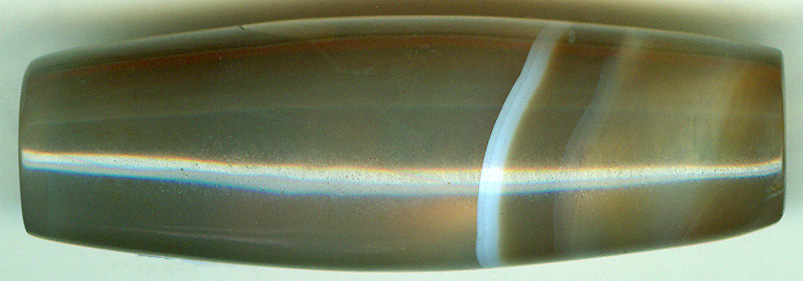
VAB-DS 12 - 33 * 10 mm

VAB-DS 13 - 33 * 8 mm
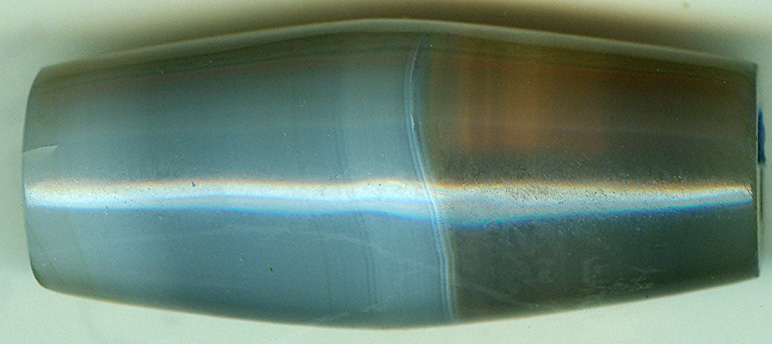
VAB-DS 14 - 31 * 13 mm
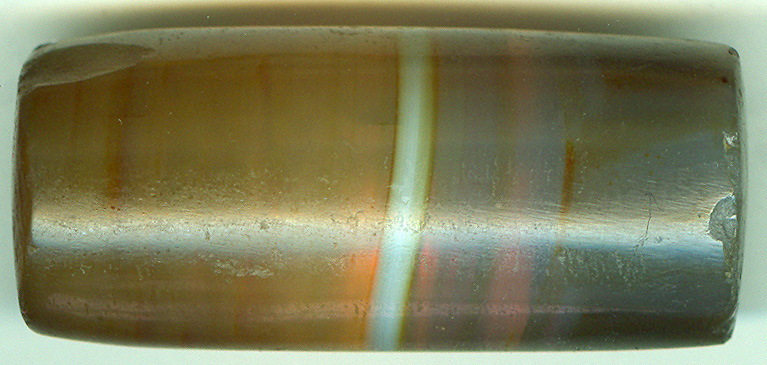
VAB-DS 15 - 31 * 13 mm
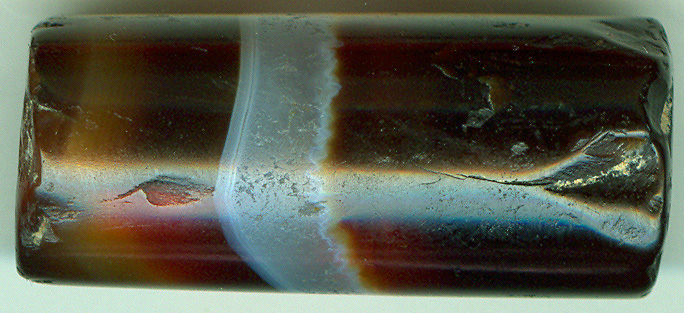
VAB-DS 16 - 27 * 11 mm
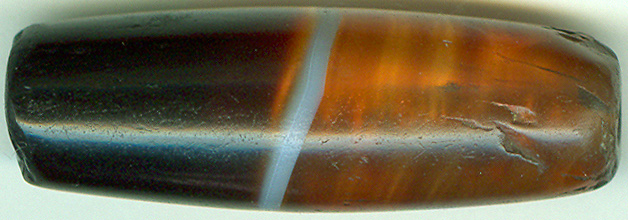
VAB-DS 17 - 26 * 8 mm
|
KALINGA HEIRLOOM BEADS FROM THE PHILIPINES
|
|
|
|
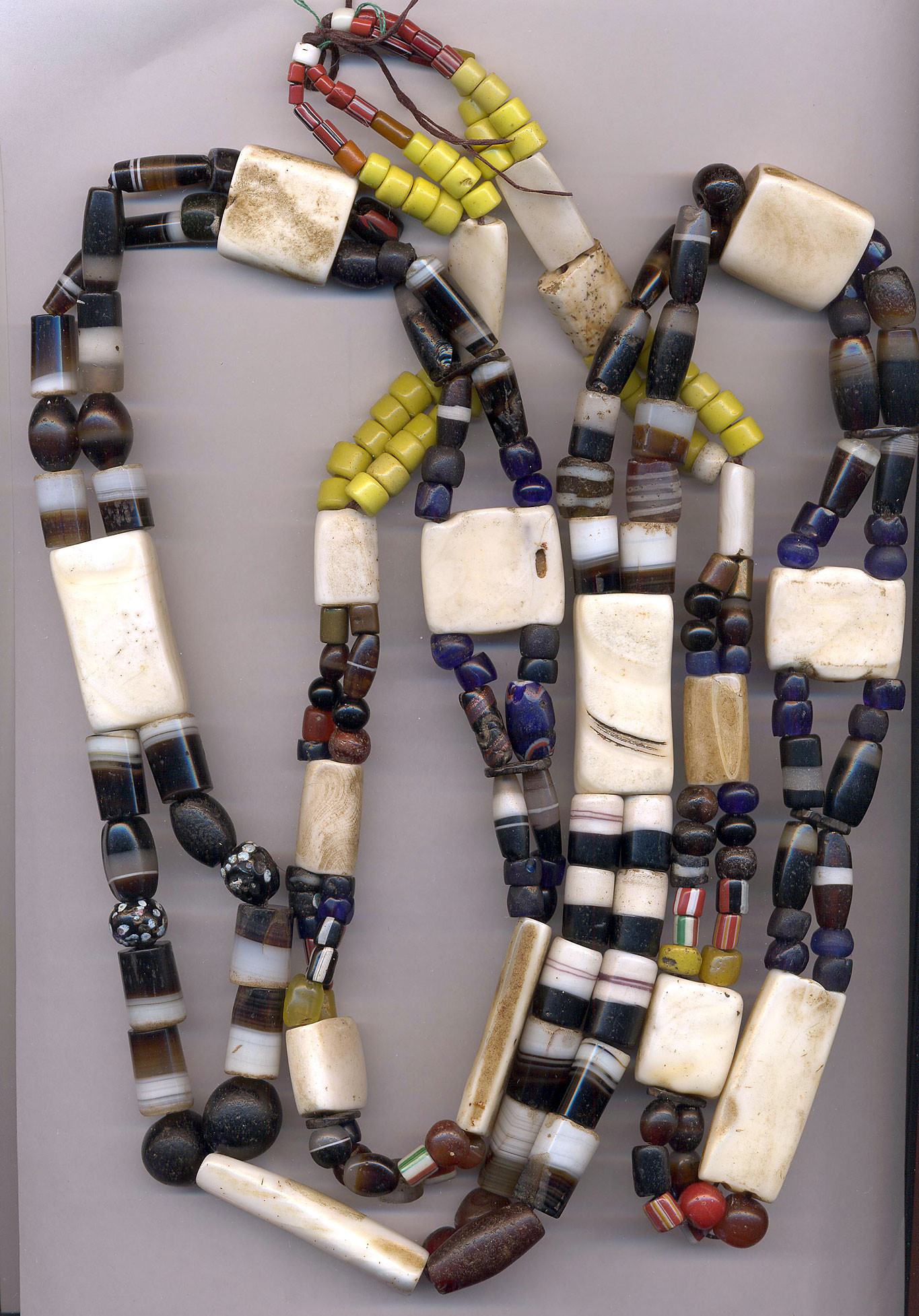
VAB 34 -
|
Kalinga Heirloom Beads:
A Historic Tapestry
This multi-strand necklace, adorned with heirloom beads,
unfolds like a vivid history book, traversing epochs and
cultures. It begins its narrative with ancient Indian
agate and onyx beads and concludes its tale with
19th-century European glass beads. The notable large
much older white rectangular beads, likely crafted from
tridacna clam shells, add a unique touch to the
composition.
This necklace bears the marks of time, revealing
significant wear and tear from generations of use. Upon
marriage, Kalinga women inherit these precious beads and
proudly wear them as a daily symbol of their lineage and
culture. The Kalingas uphold a matriarchal society, with
each mother passing down her cherished strand to her
eldest daughter. In wealthier families, younger
daughters also receive their own heirloom strands.
This heirloom necklace, therefore, becomes a living
testament to the lineage of the family, weaving together
generations across a timespan of more than a thousand
years. It is a tangible embodiment of the family's
legacy, continuously evolving and aging, much like the
family it represents. Each bead thus narrates a fragment
of the family's history, creating a diverse and rich
tapestry of their collective journey.
|
|
|
|
|
ANCIENT CONCH SHELL BEADS
These are not
Nagaland conch shell beads. They were found in Uttar Pradesh. On VABC 35
you can still see the coloring in both ends where the gold cabs have
been sitting.
|
|
|
|
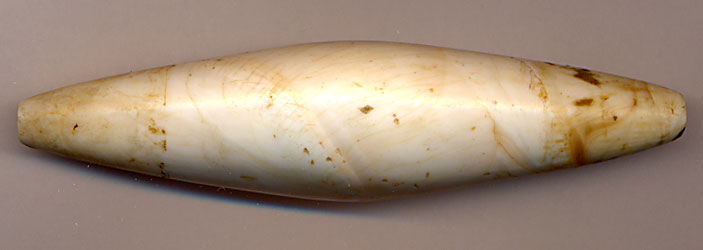
VABC
35 -
112 *
25
mm

|
|
|
|
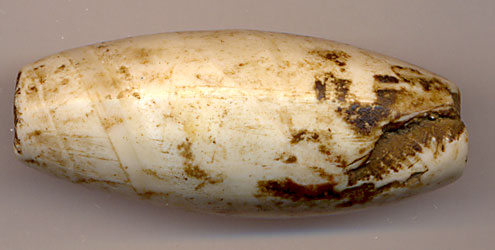
VABC 36
-
61 *
24
mm
|
|
|
|
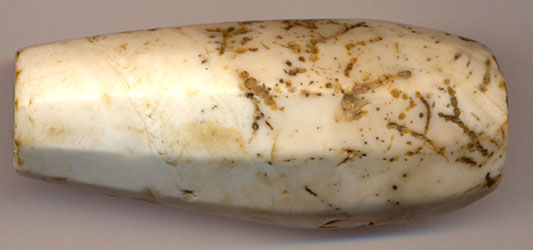
VABC 37
-
68 * 27
mm
|
Ancient Spindle Whorls: Tools of Yesteryears
A
spindle whorl
, a distinct object of the
past, is a disc-shaped implement that was fitted onto a
spindle to enhance and sustain its spinning speed. The
primary purpose of this object was to provide momentum
to the spinning process, a critical step in thread and
yarn production, which were fundamental materials in
weaving and textile manufacturing.
The spindle whorls featured below originated from
ancient Persia, dating back to approximately 1000 BC.
During this era, textiles played a central role in
Persia, both in domestic life and trade, leading to the
widespread use of spindle whorls. These objects offer
valuable insights into the early development of textile
production techniques and the roles these practices
played in shaping societal structures.
Carved from stone, clay, or other locally available
materials, these spindle whorls are more than just
simple tools. They were often ornately decorated and
demonstrate a high level of craftsmanship, indicating
the importance of textile production in the society of
the time. Today, these artifacts serve as tangible links
to our past, allowing us a glimpse into the everyday
lives of our ancestors and their cultural and economic
pursuits.
|
|
|
|
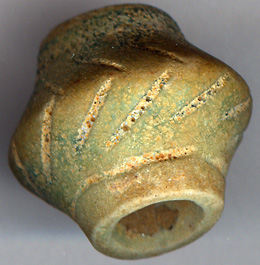
SPND 1
- 19 * 21 mm |
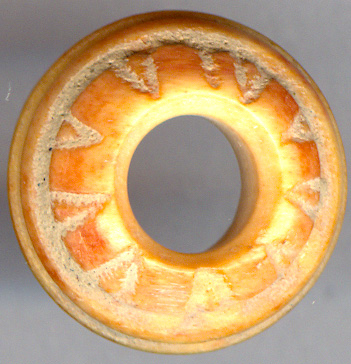
SPND 2
|
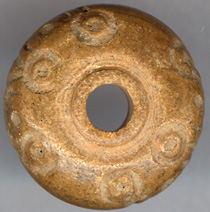
SPND 3 - 17
* 7 mm |
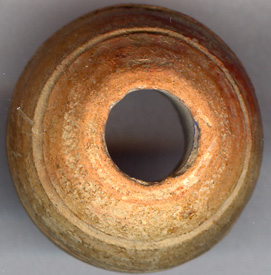
SPND 4 -
23 * 15 mm
|
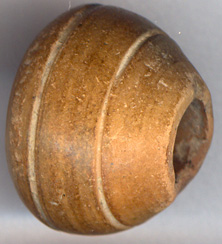
SPND 5 -
19 * 14 mm
|
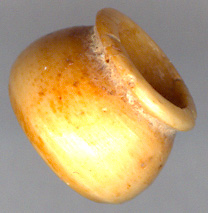
SPND 6 -
5,5 * 8 mm
|
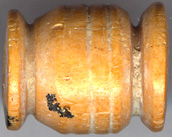
SPND 7 -
14 * 11 mm |
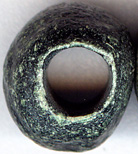
SPND 8 - 13,5 * 11,5 mm
|
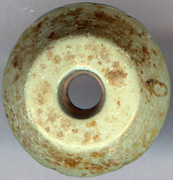
SPND 9 -
14,5 * 6,5 mm |
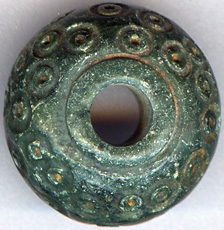
SPND 9 -
19 * 9,5 mm
|
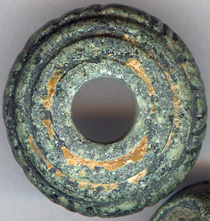
SPND 10 -
17,5 * 10,5 mm |
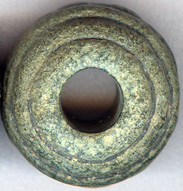
SPND 11 -
14 * 11 mm
|
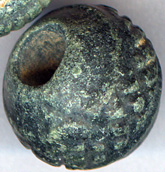
SPND 12 -
14 * 11 mm |
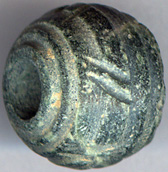
SPND 13 -
14 * 11,5 mm
|
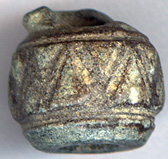
SPND 14 -
13 * 12 mm |
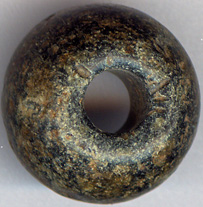
SPND 15 -
17 * 10 mm
|
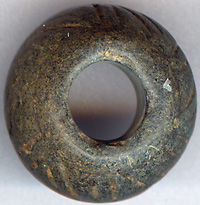
SPND 16 -
16,5 * 10 mm |
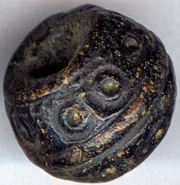
SPND 17 -
16 * 13 mm
|
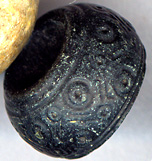
SPND 18 -
13,5 * 7,5 mm
|
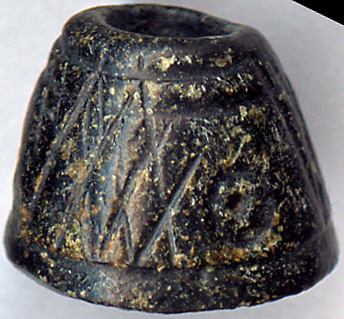
SPND 19 -
14 * 11,5 mm
|
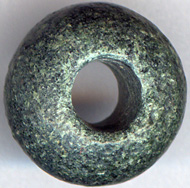
SPND 20 -
15 * 9 mm
|
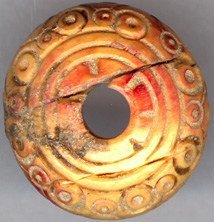
SPND 21 - 18 * 8,5 mm
|
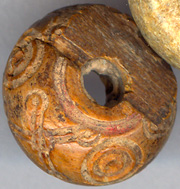
SPND 22 -
16 * 8,5 mm |
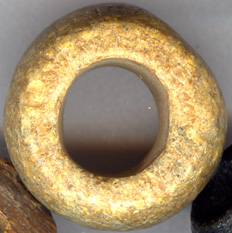
SPND 23 -
19 * 12 mm
|
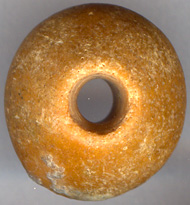
SPND 24 -
17 * 11 mm
|
|
|
|
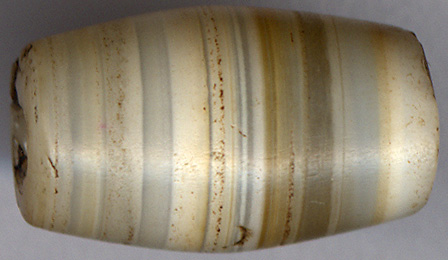
VAB-aba 1 -
25 * 14 mm
|
|
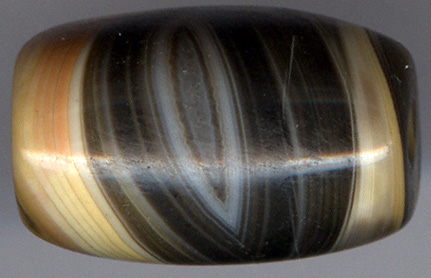
VAB-aba
2 -
17
* 11 mm |
|
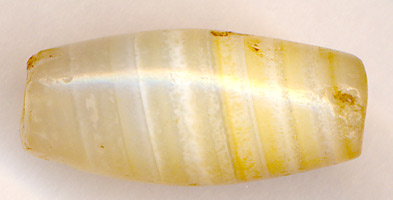
VAB-aba
3 -
25 *
11mm |
|
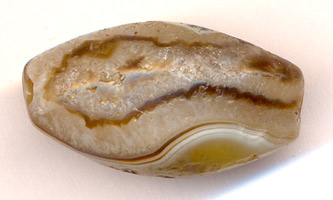
VAB-aba
4 -
25 * 14mm
An ancient agate bead with deep crystaline structures. |
|
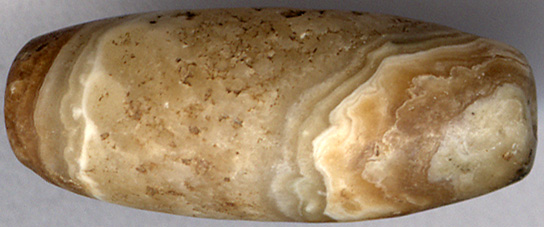
VAB-aba
5 -
22 * 9 mm |
|
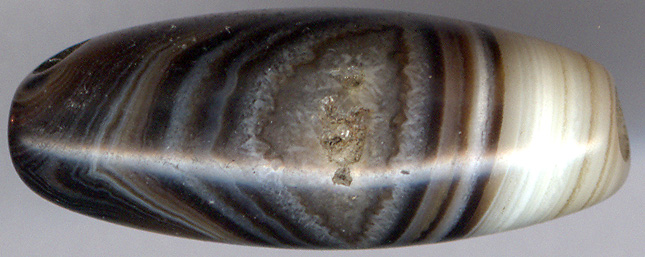
VAB-aba
6 -
26 * 10 mm
|
|
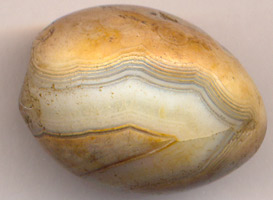
VAB-aba
7 -
24 * 17mm |
|
|
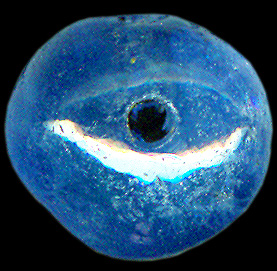
Old Sri Lankan Beads
|